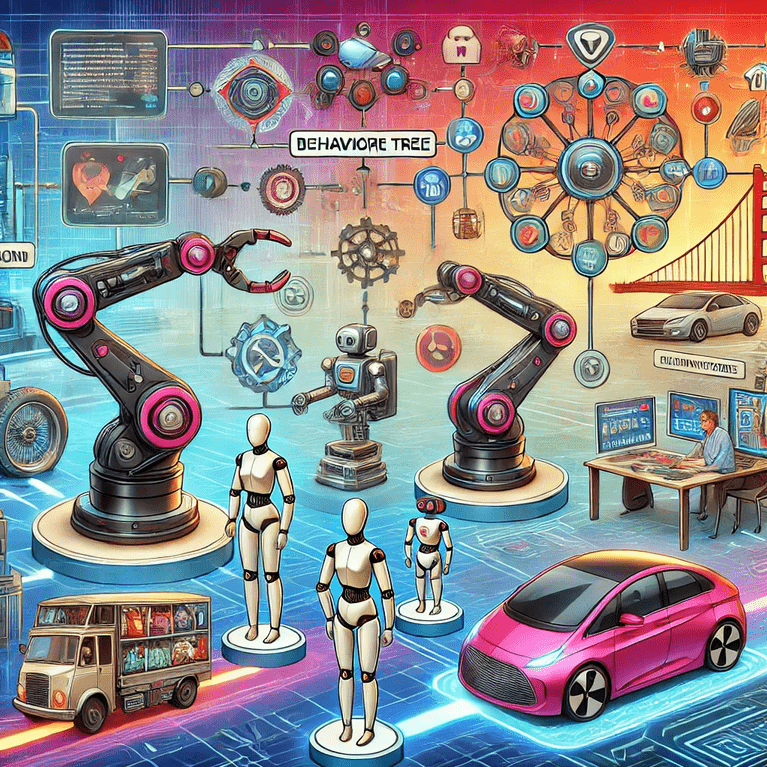In the complex worlds of Artificial Intelligence and Robotics, designing intelligent, responsive, and believable behaviors is a core challenge. Traditional state machines can quickly become unwieldy, turning intricate decision-making into a tangled mess of transitions. This is where Behavior Trees emerge as a powerful, elegant solution. A Behavior Tree is a graphical, hierarchical structure used to model complex sequences of actions and decisions for autonomous agents.
From powering realistic characters in video games to guiding industrial robots, Behavior Trees offer a structured, modular, and highly readable way to define AI. Whether you’re a business leader aiming to deploy more sophisticated autonomous systems or a tech professional eager to master a fundamental AI design pattern, understanding Behavior Trees is essential. Let’s delve into how they unlock innovation in AI and Robotics for both enterprises and tech talent.
For Enterprise Leaders: How Do Behavior Trees Drive ROI and Operational Excellence?
For senior managers, directors, VPs, and C-suite executives, the ability to rapidly develop, deploy, and maintain intelligent autonomous systems directly impacts operational efficiency, product innovation, and competitive advantage.
- Direct Answer: Behavior Trees drive significant ROI by enabling the rapid development and robust maintenance of complex AI behaviors in robotics and software agents. This leads to faster time-to-market for intelligent products, reduced debugging costs, improved system reliability, and enhanced flexibility in adapting autonomous systems to new requirements or environments.
- Detailed Explanation and Supporting Evidence:
- Simplified Complexity & Faster Development: Behavior Trees break down complex decision-making into smaller, manageable, and reusable nodes. This modularity dramatically speeds up the design and implementation of AI logic compared to monolithic state machines, accelerating product development cycles.
- Enhanced Maintainability & Debugging: Their hierarchical and visual nature makes Behavior Trees incredibly easy to read and understand, even for non-programmers. This clarity simplifies debugging, reduces the chance of errors, and makes it much easier to modify or extend behaviors over time, cutting maintenance costs.
- Increased Reliability & Predictability: By clearly defining the execution flow, Behavior Trees ensure that agents make predictable and consistent decisions. This is vital for industrial robots, autonomous vehicles, or critical software agents where unexpected behavior could lead to safety issues or system failures.
- Reusability of Components: Individual nodes or entire sub-trees can be reused across different agents or behaviors, promoting code efficiency and consistency across an enterprise’s AI portfolio.
- Agility in Adaptation: Businesses can quickly adjust autonomous system behaviors in response to new data, changing market conditions, or evolving operational needs without a complete rewrite of the AI logic.
Curate Partners’ Consulting Lens: We observe that organizations adopting Behavior Trees achieve greater agility and reliability in their AI and robotics initiatives. Our consulting services help businesses design, implement, and optimize intelligent autonomous systems, delivering tangible operational and product advantages.
For Tech Professionals (Data Engineers, Data Scientists): How Can Mastering Behavior Trees Advance Your Career?
For data engineers, data scientists, and developers interested in AI and intelligent systems, understanding Behavior Trees offers a practical entry point into AI design and implementation.
- Direct Answer: Mastering Behavior Trees equips you with fundamental skills in AI design, logical decision-making structures, and modular system development. This expertise is highly valued for roles in AI Engineering, Robotics Software Development, Game AI, and even Data Science roles focusing on prescriptive analytics or agent-based modeling, significantly enhancing your ability to design and implement intelligent behaviors.
- Detailed Explanation and Supporting Evidence:
- Practical AI Design: You’ll gain hands-on experience in structuring how an AI agent makes decisions, from simple actions to complex goal-oriented behaviors. This provides a tangible way to apply theoretical AI concepts.
- Logical Thinking & Problem Decomposition: Designing Behavior Trees forces you to break down complex problems into smaller, testable logical units, a critical skill transferable to any engineering or data science challenge.
- Versatility in AI Fields: Behavior Trees are a standard in game AI (e.g., used in Unreal Engine, Unity) and are increasingly adopted in robotics, simulations, and even enterprise automation for defining agent workflows.
- Bridging Data and Action: For Data Engineers and Data Scientists, understanding Behavior Trees helps bridge the gap between data-driven insights (e.g., from predictive models) and actionable AI behavior. For example, a data scientist might build a model that predicts a robot’s optimal path, and a Behavior Tree would then execute that path within its operational constraints.
- Debugging and Performance Profiling: The visual nature of Behavior Trees often comes with tools that allow you to see the AI’s decision flow in real-time, greatly simplifying debugging and performance optimization.
- Demand in Niche Sectors: As autonomous systems become more prevalent, professionals who can design and implement robust AI using patterns like Behavior Trees are increasingly in demand.
Curate Partners’ Talent Focus: We connect skilled AI and robotics professionals with leading companies building intelligent autonomous systems, providing opportunities to work on cutting-edge projects where Behavior Trees are key.
Conclusion: Behavior Trees – The Blueprint for Intelligent Action
Behavior Trees are more than just a programming pattern; they are a powerful methodology for designing intelligent and reliable autonomous systems. For businesses, they translate into faster development, lower maintenance costs, and the ability to deploy more sophisticated and trustworthy AI and robotic solutions. For tech professionals, mastering Behavior Trees provides a practical, in-demand skill set crucial for careers in AI engineering, robotics, and game development.
By unlocking the power of Behavior Trees, organizations and individuals can confidently build the next generation of intelligent systems that drive innovation and success.



